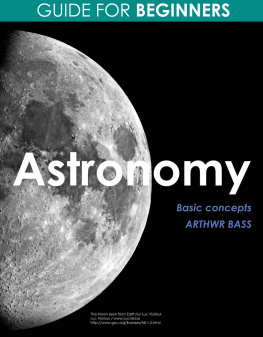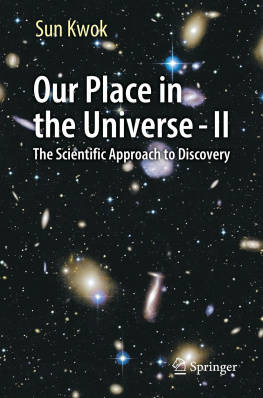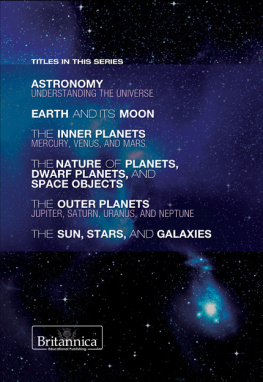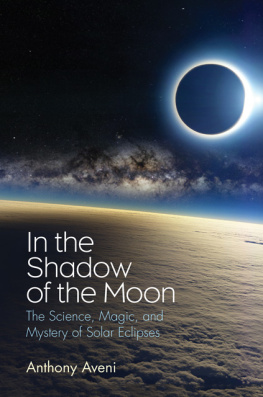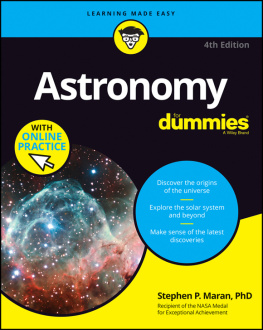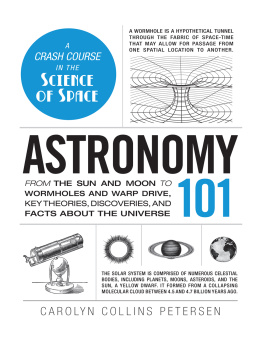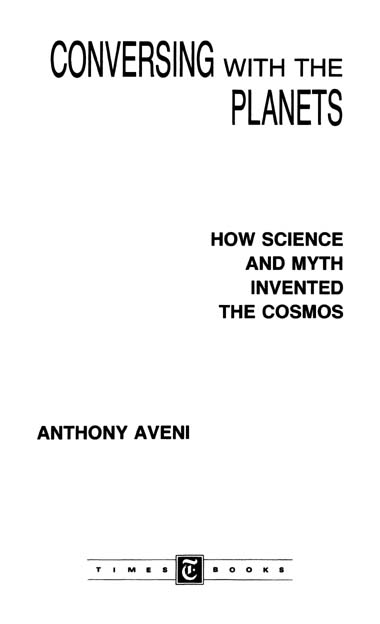Also by Anthony Aveni
Empires of Time
Skywatchers of Ancient Mexico
Copyright 1992 by Anthony Aveni
All rights reserved under International and Pan-American Copyright Conventions.
Published in the United States by Times Books, a division of Random House, Inc., New York, and simultaneously in Canada by Random House of Canada Limited, Toronto.
Library of Congress Cataloging-in-Publication Data
Aveni, Anthony F.
Conversing with the planets: how science and myth invented the cosmos / Anthony Aveni.
p. cm.
Includes bibliographical references.
eISBN: 978-0-307-81654-2
1. Cosmology. 2. Cosmology, Ancient. 3. Cosmology, Babylonian. 4. Science fiction. 5. Anthropology. I. Title.
QB981.A99 1992
398.362dc20 91-51037
v3.1
For Lorraine
ACKNOWLEDGMENTS
To my colleagues Johanna Broda, Robert Bye, David Carrasco, Michael Closs, Robert Garland, Owen Gingerich, Joscelyn Godwin, Atsuko Hattori, Justin Kerr, Louise MacDonnell, Margaret Maurer, Jim McCoy, Ellen Peletz, Linda Schele, Barry Shain, Barbara Welther, Warren Wheeler, and Chelle Wolboldt, who have provided materials, dialogue, services, or all three, I offer my gratitude.
I praise the editorial skills of Susan M. S. Brown and Betsy Rapoport, the faith of Faith Hamlin, and the ever-constructive support of Lorraine Aveni.
PREFACE
T urn out the lights and watch the real ones in heaventhose our ancestors imaginative minds used to mold a wonderful poetic imagery about themselves and their relation to the universe. For long ago the fingertips of humankind touched earth and sky more sensitively, and from those sensations there came a self-awareness that we could never be separate from nature. Our predecessors expressed their conscious presence in a living universe through a vivid and imaginative dialogue with its many aspectswith mountain, water, moon, and sun. They explained what the real world meant to them through their art, architecture, and the written and spoken word, and they passed their revealed truths down to succeeding generations, who accepted some eternal verities and altered others. My goal is to trace how and why their dialogue with nature has changed to become what ours is today.
I am about to explore the many and varied ways people from all ages have been attracted, like moth to flame, to a handful of bright lights called planets that move steadily, yet erratically, across the sky. Because the ancients accorded one planet special status, Venus will become my primary lens, through which I will focus upon the way diverse societies have framed their relationship with the natural world. They once called her the goddess of love, a fickle deity whose seductive behavior in evening twilight never gave a hint that she would betray her celestial lover in the stark light of dawn the morning after. They spoke and prayed to Venus. They paid close attention to all the subtle swerves in her promenade across the sky, for they knew well that each twist and turn would bear direct consequences for them: bad crops, war, pestilence, or fertile fields and peace with their neighbors. They asked her questions, and the answers she gave helped them to organize, order, and structure the universe around and within them.
We can never know how past people understood their universehow they discovered the ways its manifold parts harmonized togetherunless we make some attempt to see what they saw, to hear what they heard, to feel what they felt, to taste what they tasted, and to smell what they smelled. Understanding how nature and culture are related begins by bearing witness to the complex behavior of things and phenomena in their natural setting. But more than this, we must read what they wrote in order to understand how our predecessors mapped what they saw in the sky onto conceptual spaces unfamiliar to our modern rational mindscolorful mythologies about the gods and the afterlife, a world of zodiacs and astrological horoscopes. We shall discover that the underlying agenda of their mythologycreating order in nature by paying attention to its subtle nuances that impinge upon the sensesdiffers little from that of our modern science. And, as we journey among the crossroads of planetary myth and science, we will find that the common sense of one era becomes the superstition of another.
Anthony Aveni
Hamilton, New York
January 1, 1992
CONTENTS
CHAPTER 1
THE PROCESS: A Common Ground of Discovery
CHAPTER 2
THE IMAGES: Planets and Sky
CHAPTER 3
MYTHOLOGY: Naming the Images
CHAPTER 4
ASTRONOMY: Following the Images
CHAPTER 5
ASTROLOGY: Believing in the Images
CHAPTER 6
TECHNOLOGY: Harnessing the Images
CHAPTER 7
SCIENCE: The Image for Its Own Sake
CHAPTER 1
THE PROCESS:
A COMMON GROUND OF DISCOVERY
Ignorance is the curse of God,
Knowledge the wing wherewith we fly to heaven.
W ILLIAM S HAKESPEARE , 2 H ENRY VI
R ecently, while visiting Mexico Citys National Museum of Anthropology and History with a group of friends, I spotted a sculpture I had not seen before. Tucked away in one corner of the Aztec Room was a jadeite representation of a calabash, or gourd-squash, about a foot across and carved out of a single chunk of stone. No real-life squash ever could have looked like this. The artist had rendered the mature, ready-to-eat Aztec staple with its attached flower opened to full bloom. Now even a weekend tiller of soil knows that when the flower is fully open and developed, the squash barely will have sprouted; or if the squash has fully matured and is ready to pick, its flower long since will have withered and dropped off. Clearly the native sculptor was capable of creating a beautiful work of art, but he was not a very keen observer of nature.
At least that is what I thought until I noticed another carving nearby. It was a representation of maize, that other basic Aztec commodity, executed in a similar guise. The image, carved this time in granite, was of a serpent, which symbolizes the earths fertility, and on its back were a number of fully matured maize cobs, their husks pulled back and neatly braided, tamale style. A flowery tassel in full bloom was attached to each cob. As with the squash, the maize sculpture depicted two stages of growth that can never happen simultaneously. Each half of the calabash and maize sculptures seemed totally faithful to what I have actually seen in my garden at the beginning and the end of the season: the correct number of petals on the squash bloom, the perfectly shaped ribs on the mature squash, the corn tassel that hangs down and blows in the wind just the way it does in the field, and the precisely articulated kernels of mature maize.
But the artists who made these carvings just a few generations before Corts landed on Mexicos shore half a millennium ago were neither nave nor inattentive. They were only expressing knowledge of the world about them in a way that is unfamiliar to us. In each case they had conflated different stages of plant metamorphosis into a single coherent image. If this bothers us, perhaps it is only because, as Darwins heirs, we live in a world that stresses evolution, development, and change. The story lines we create to explain nature follow the passage of all things, animate as well as inanimate, through temporal stagesquasar to galaxy, gas cloud to star, streambed to canyon, ape to human. The compound imagery housed in the museum in Mexico is as foreign to us as the head of an aged woman attached to a lithe young body. But for the Aztec craftsmen who were commissioned to express knowledge about the world of plants, it was less important to show a particular growth stage in the life of the plant. Rather, for reasons that escape us, the polychronic imagethe combination of realities pulled from different time frames and brought together by the human imagination into a composite wholeseems to have held greater significance. What appears nonsensical to the eye at a moment in time suddenly crystallizes into a coherent and meaningful representation of nature.



